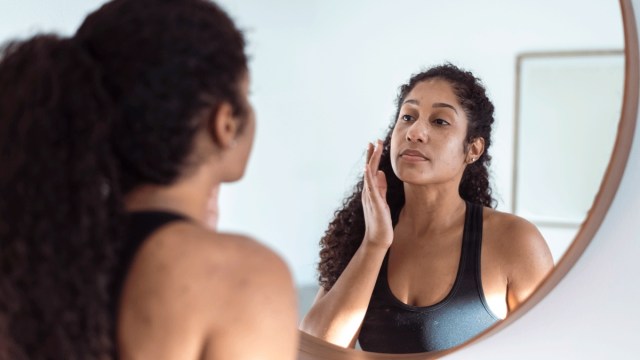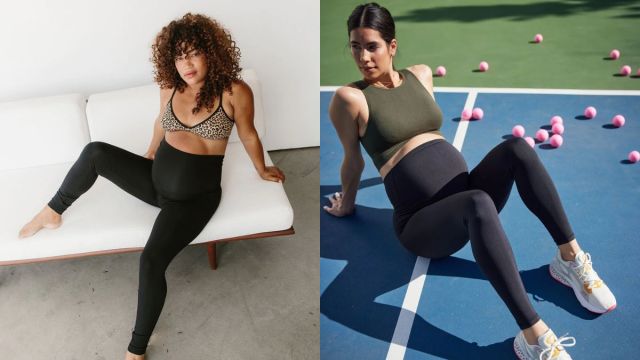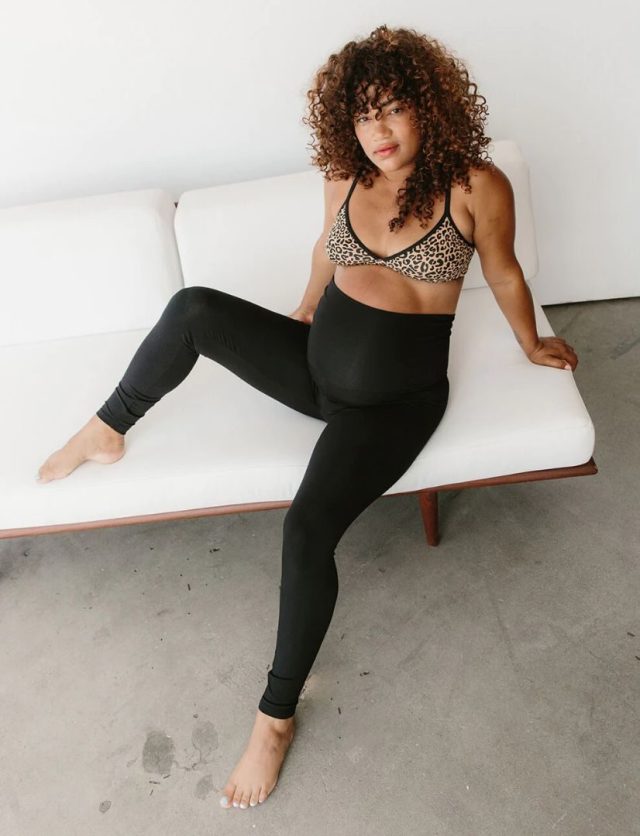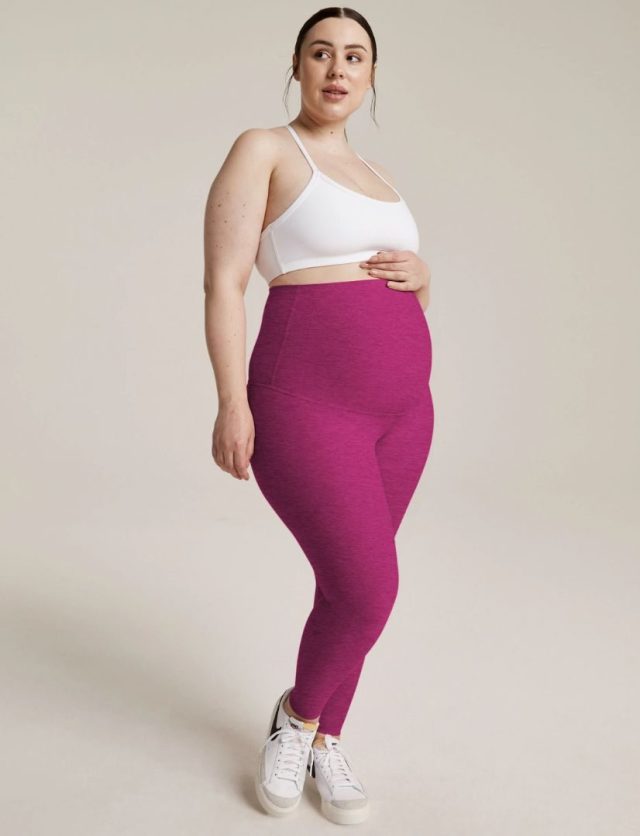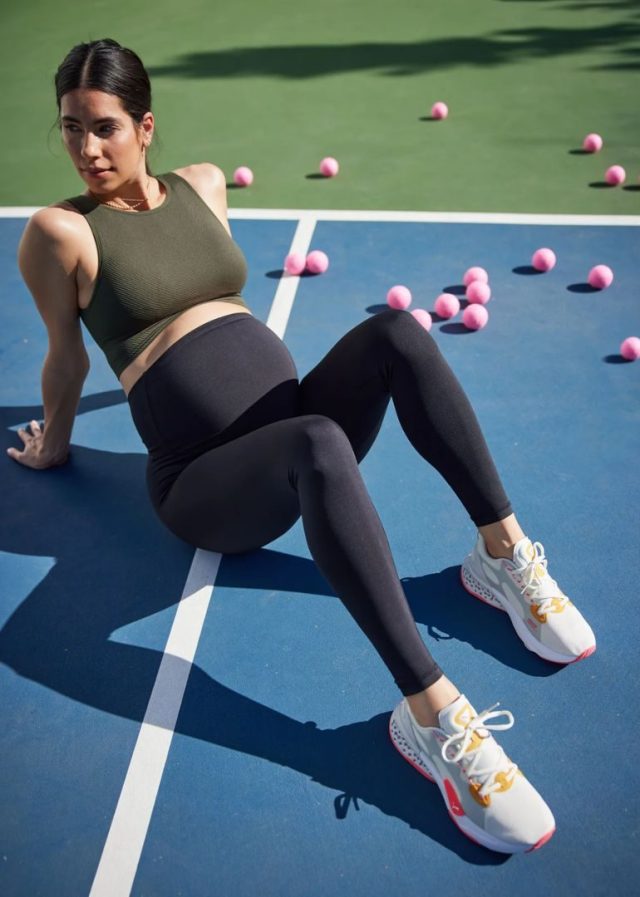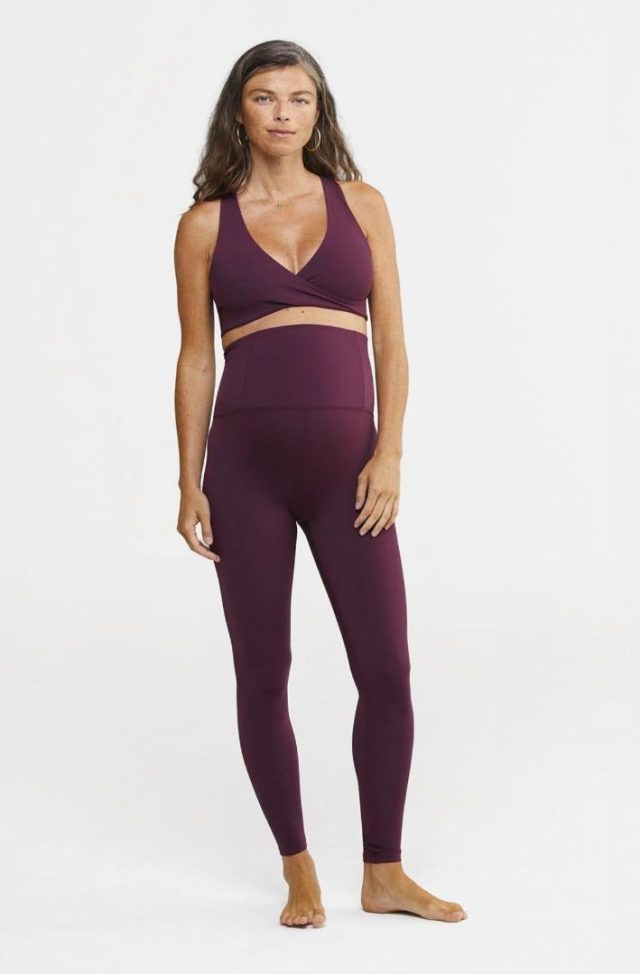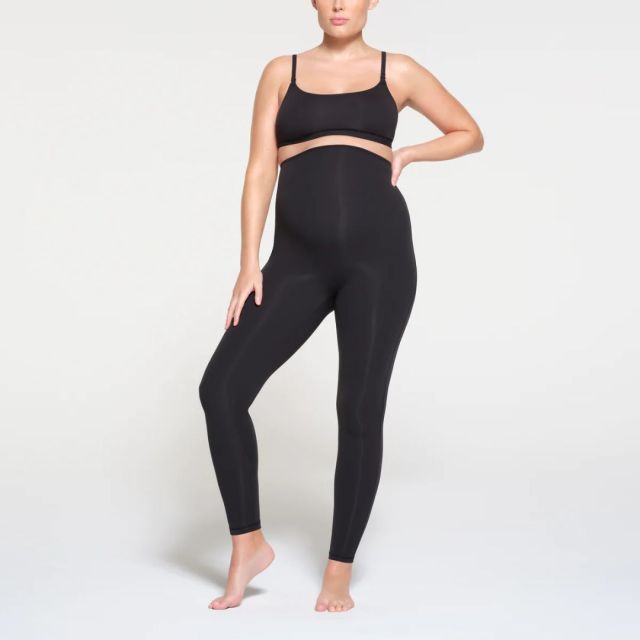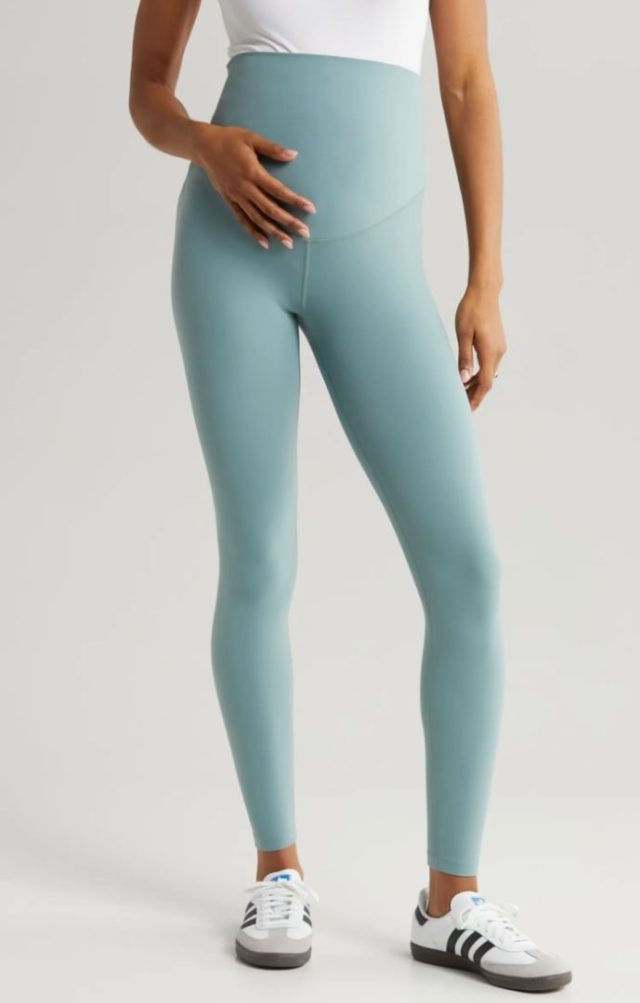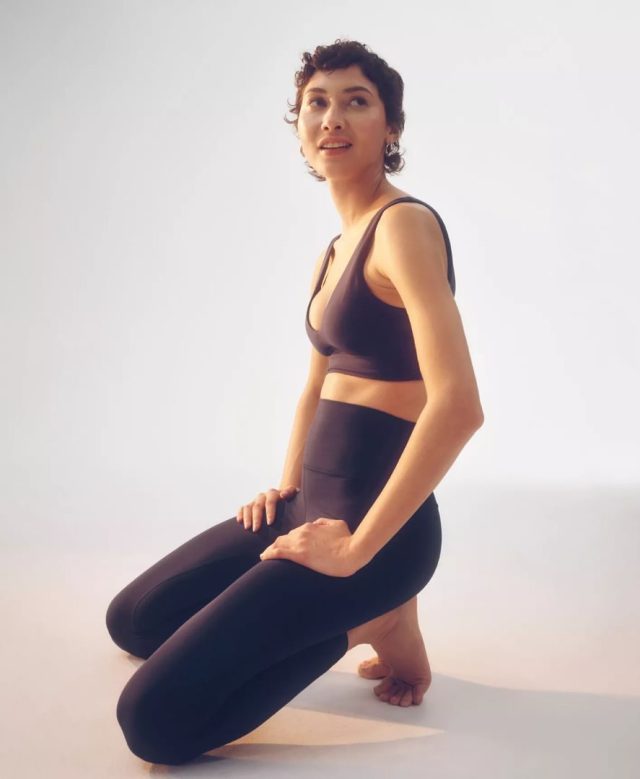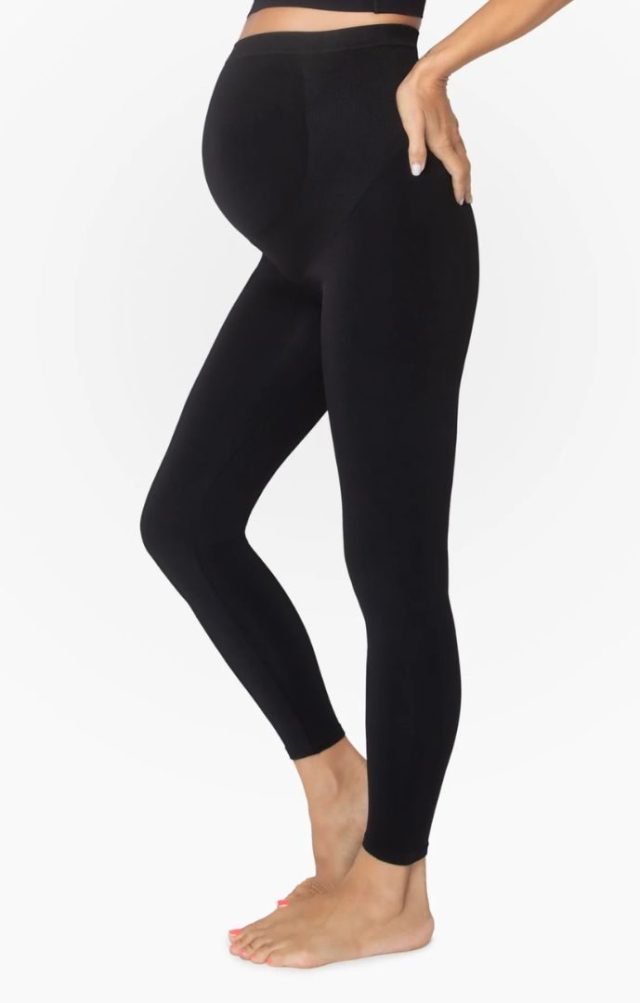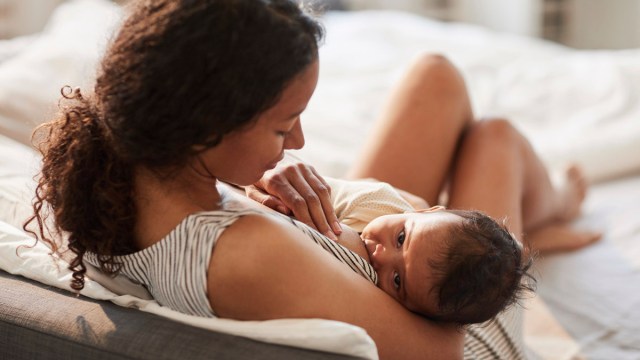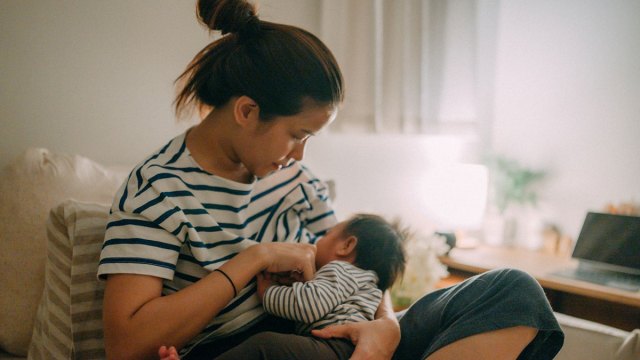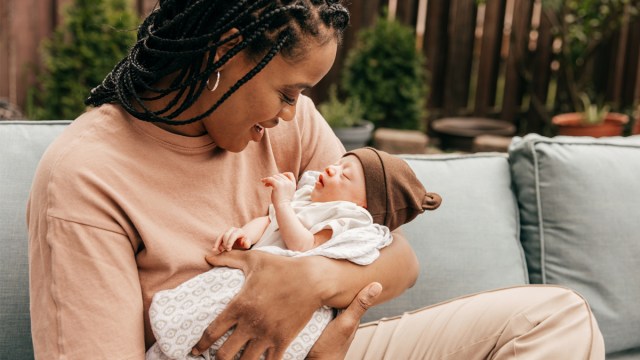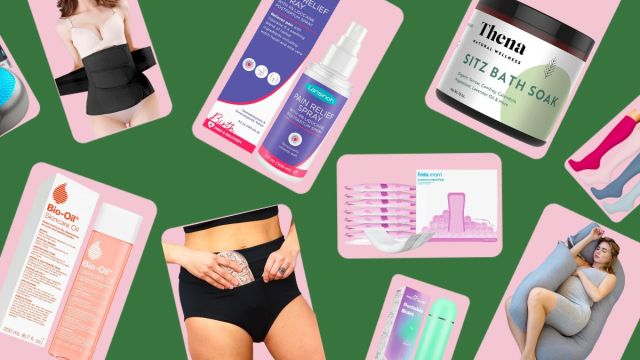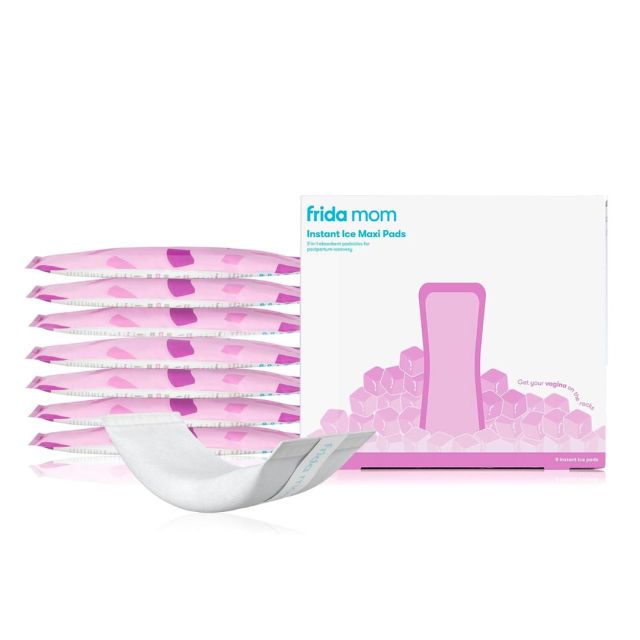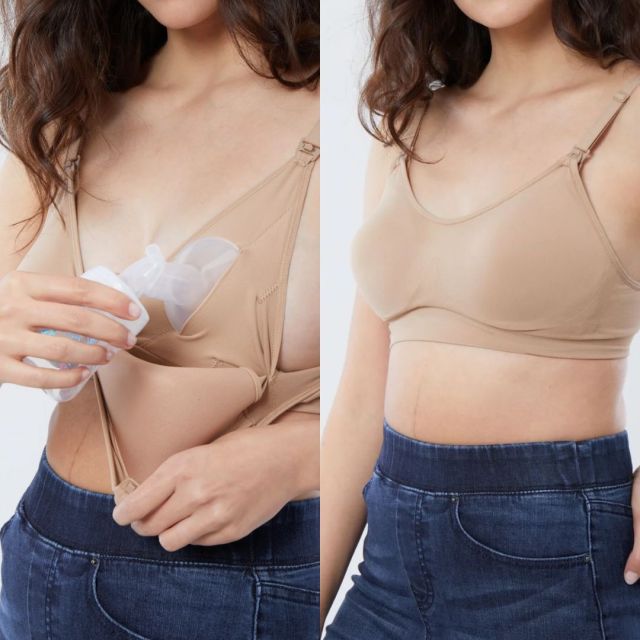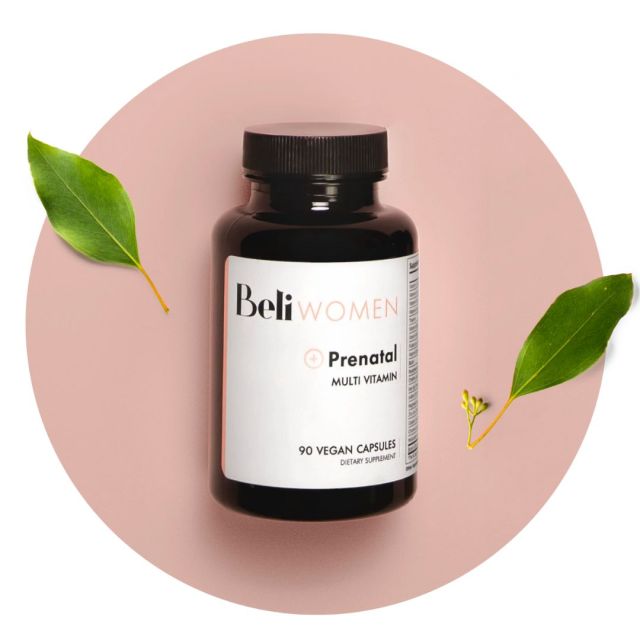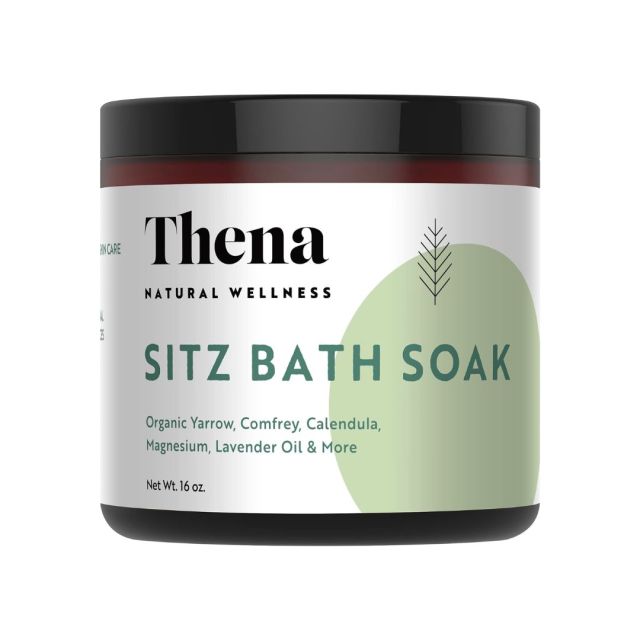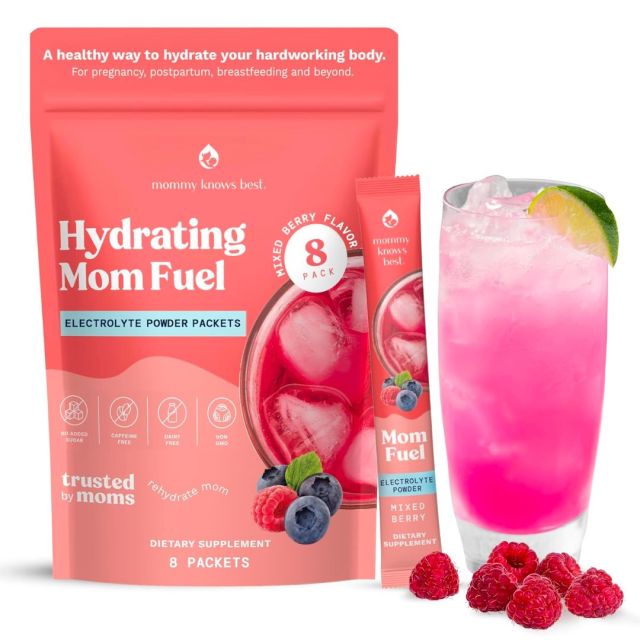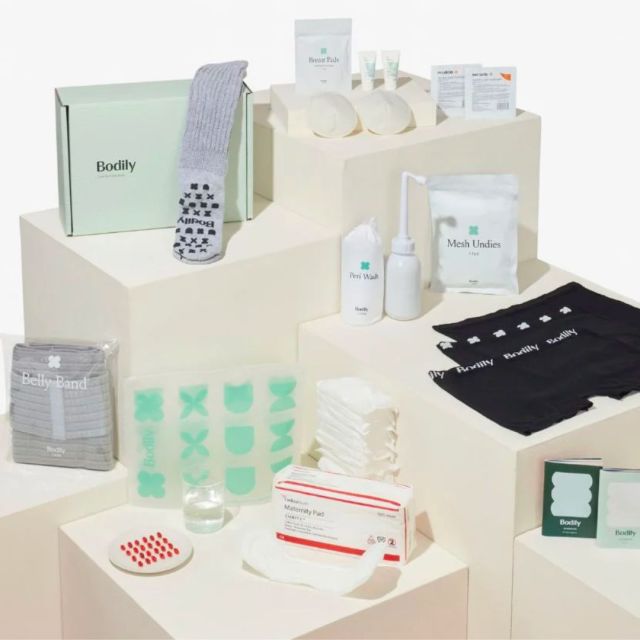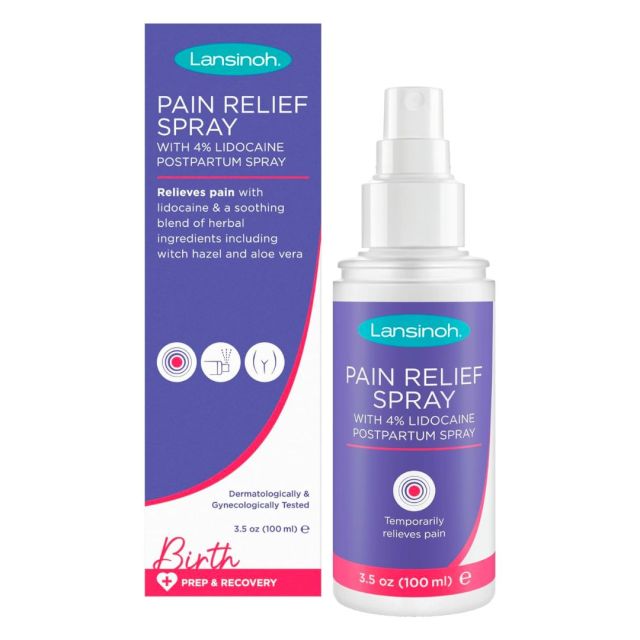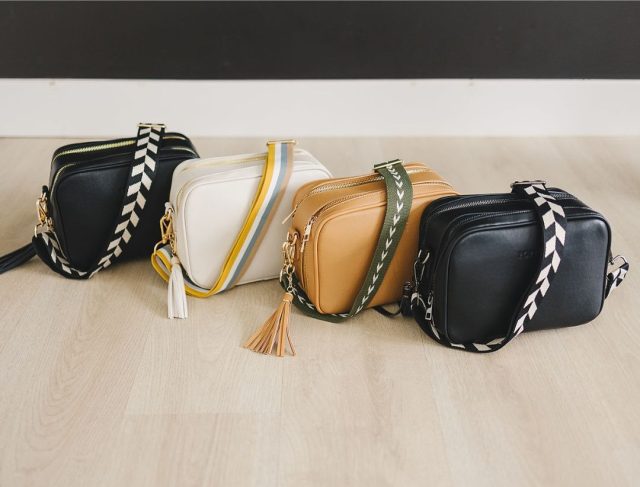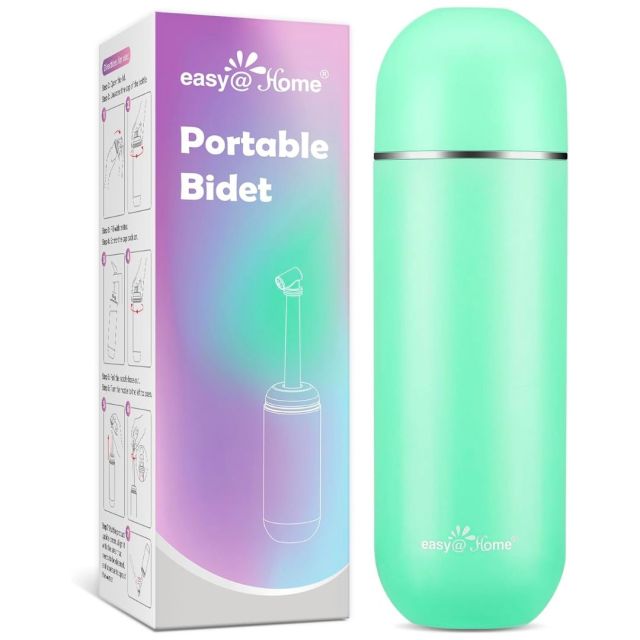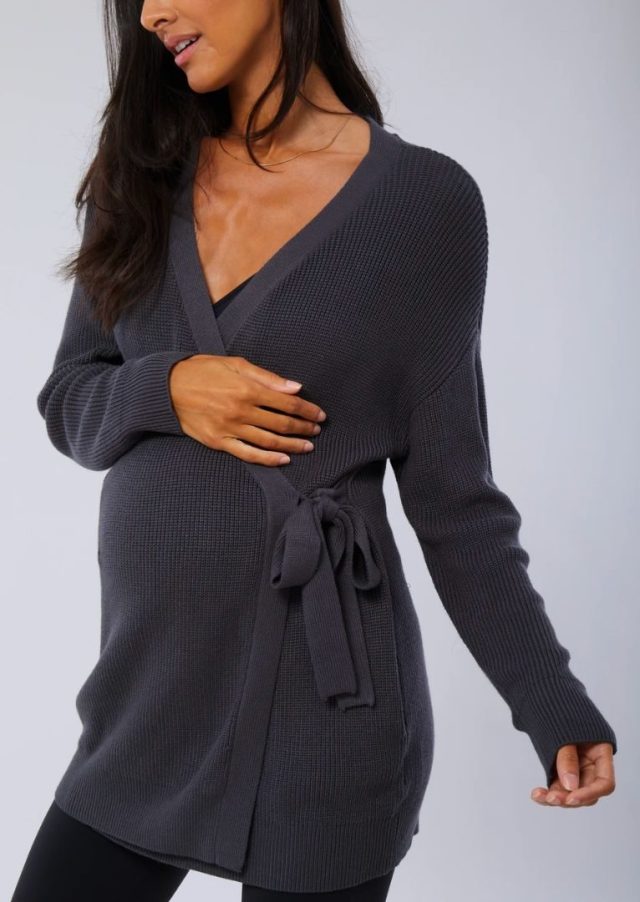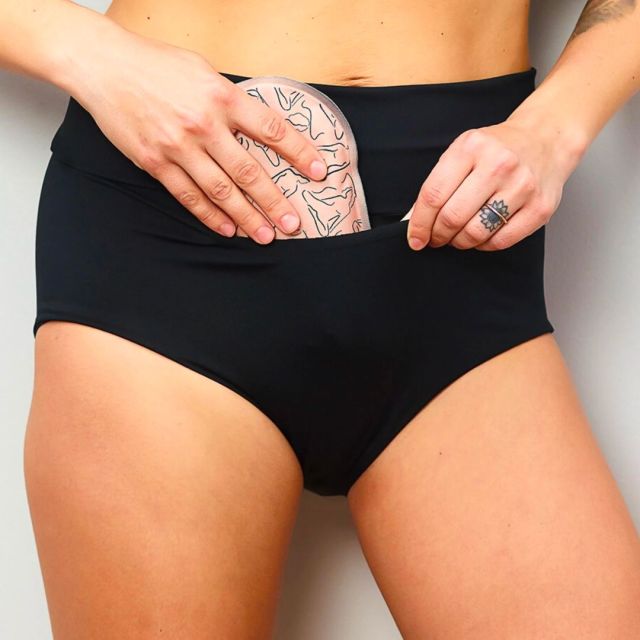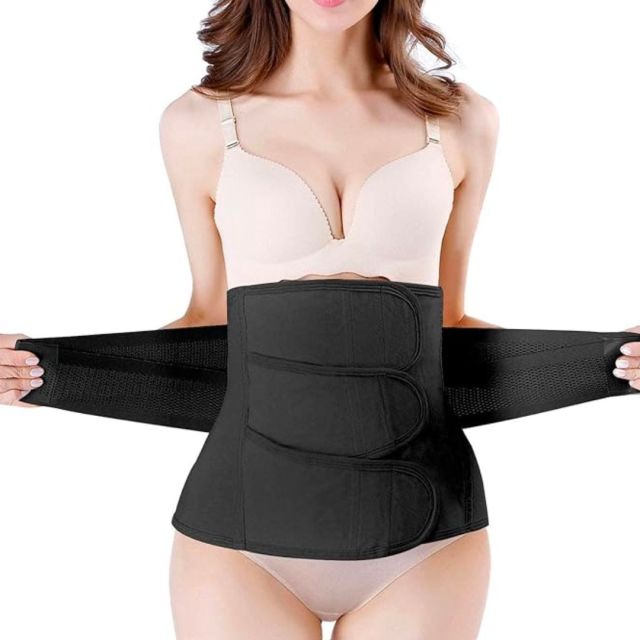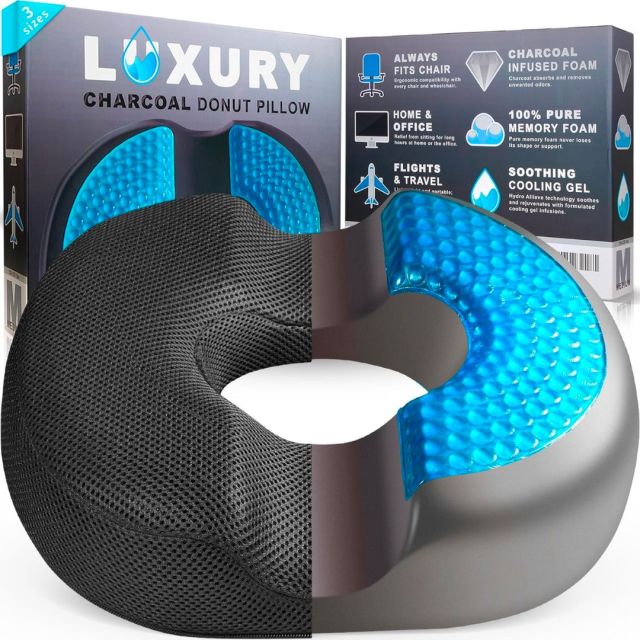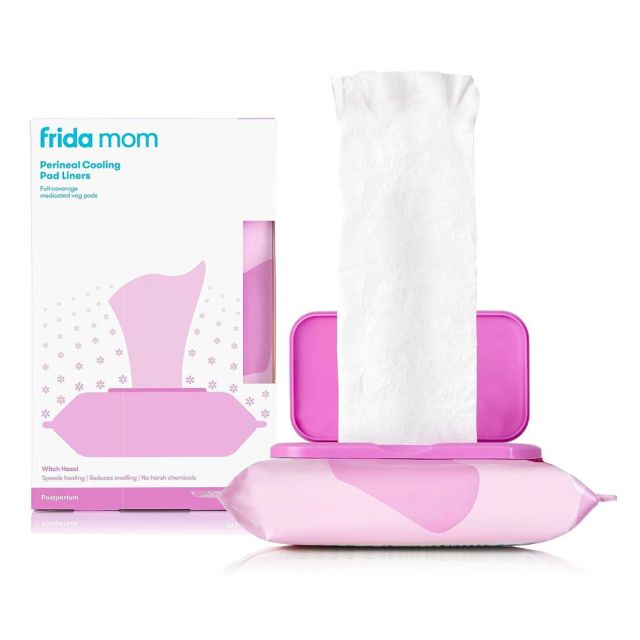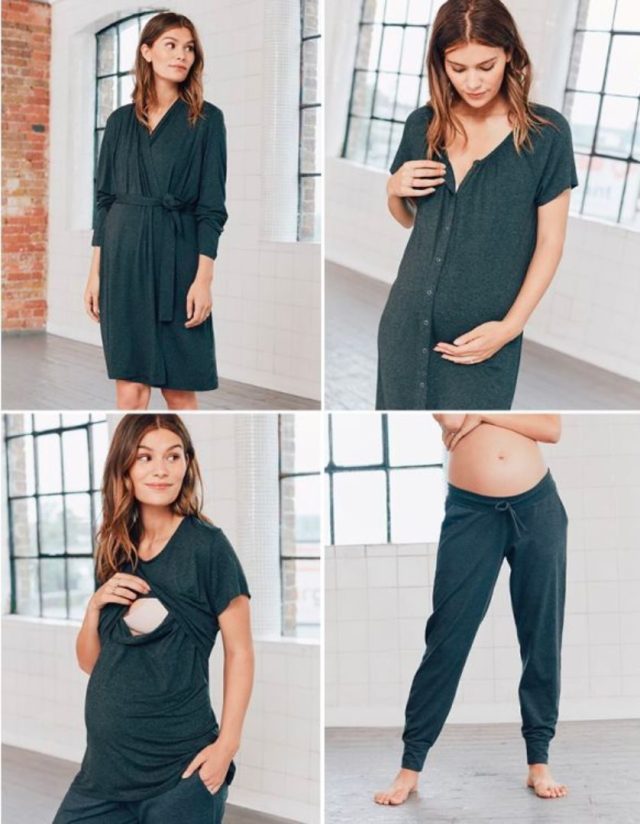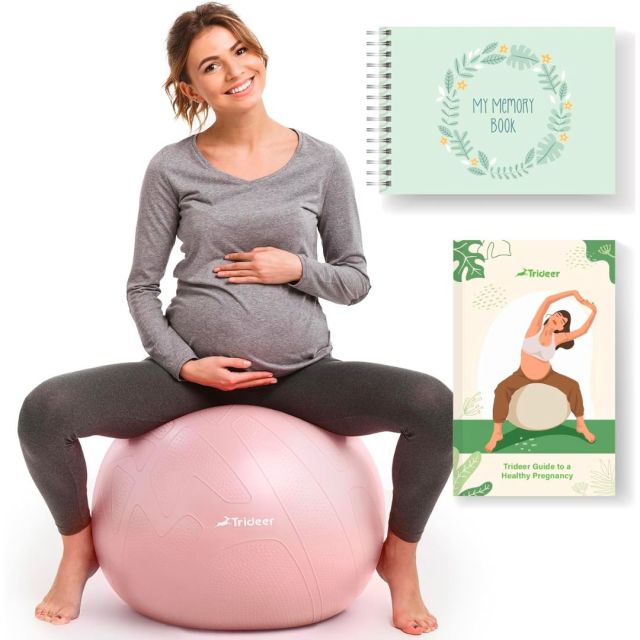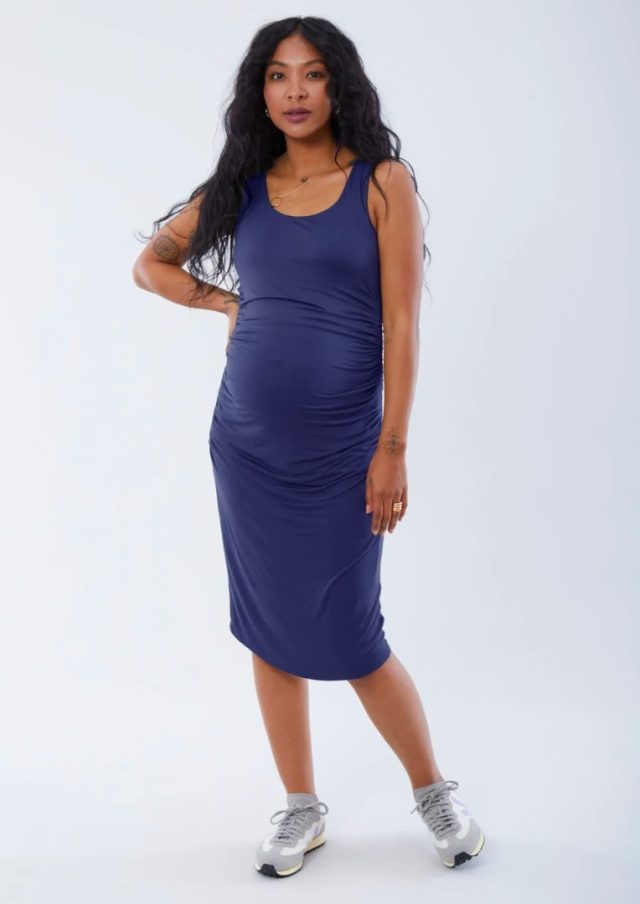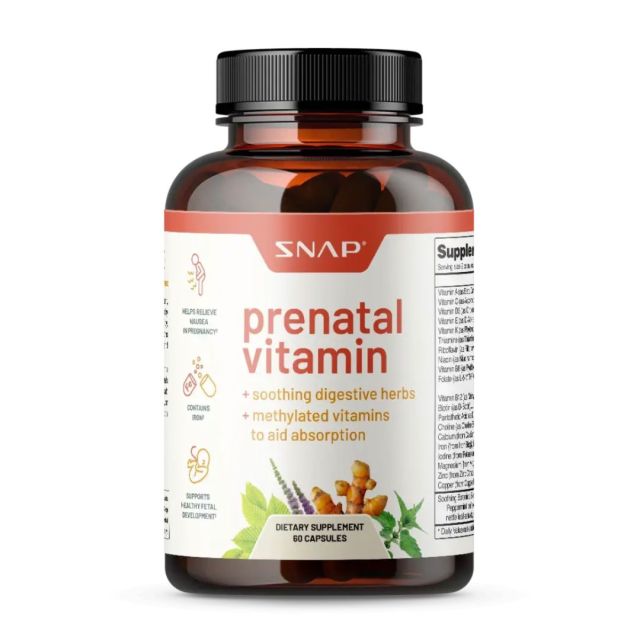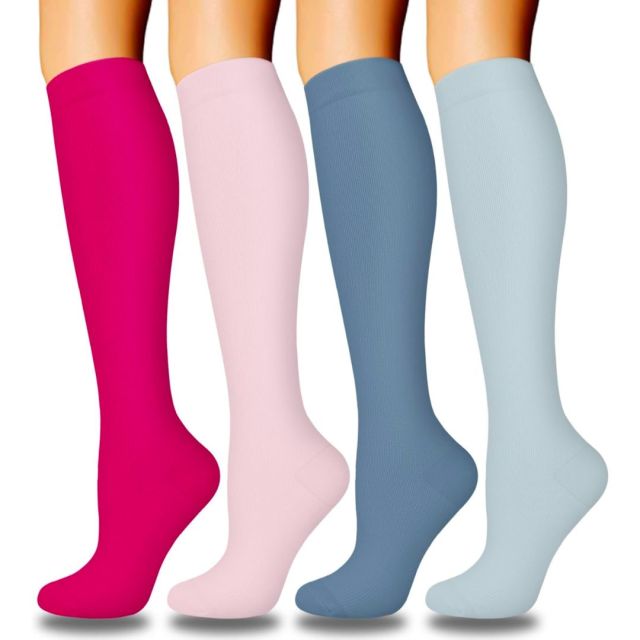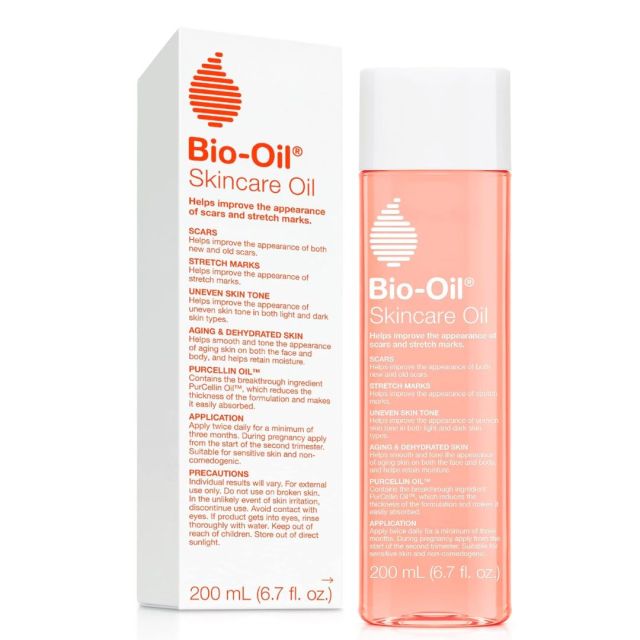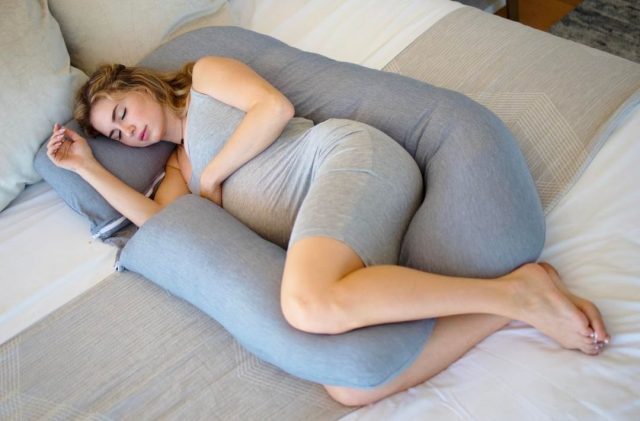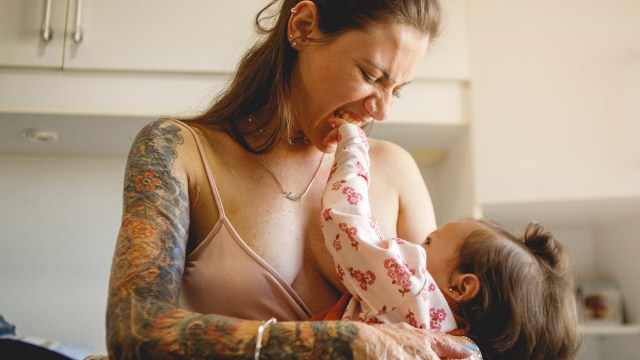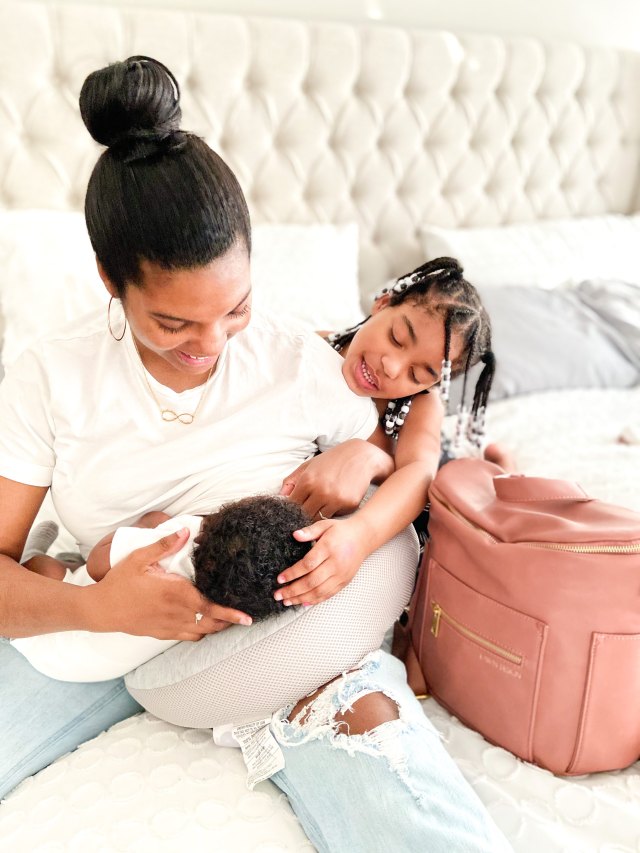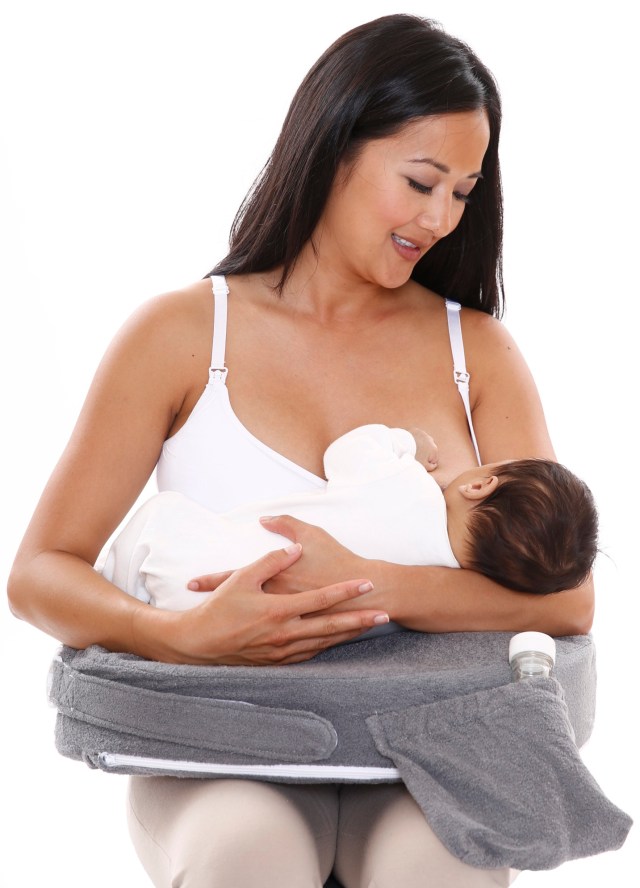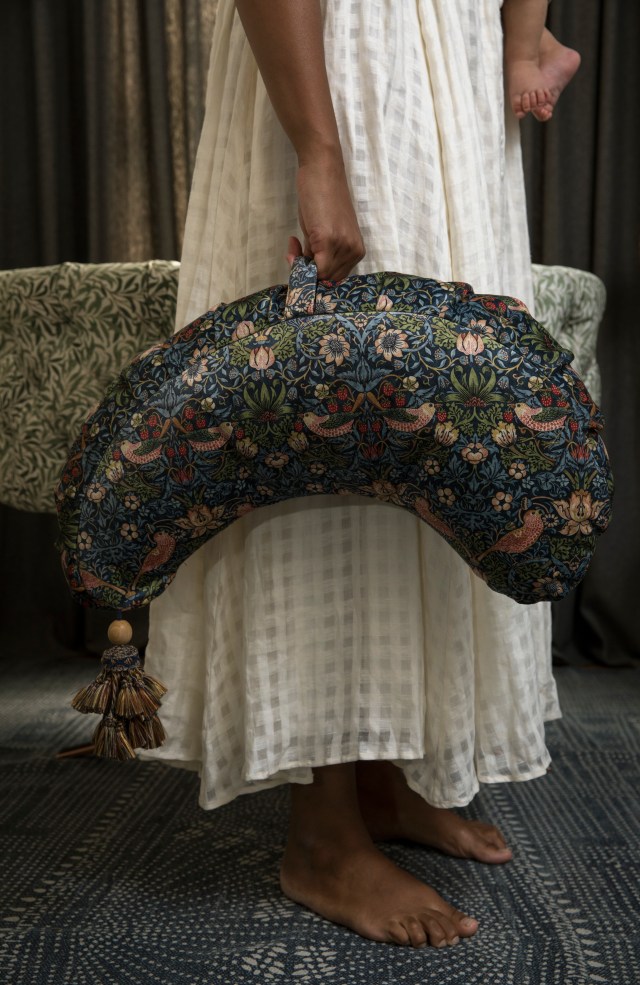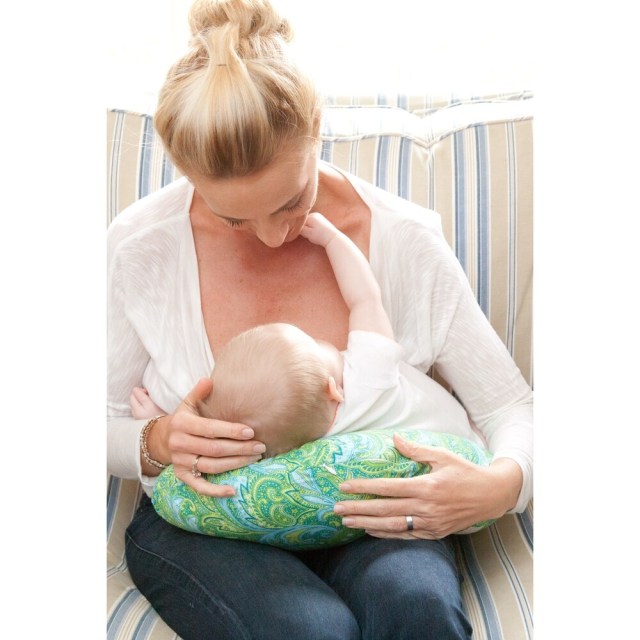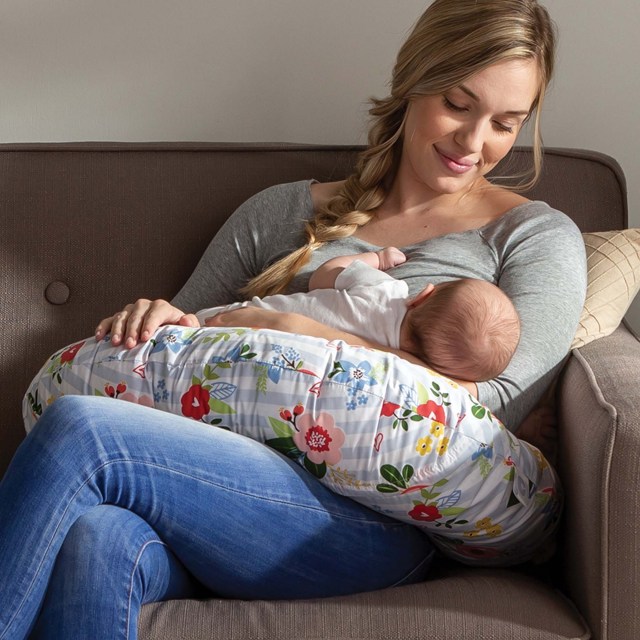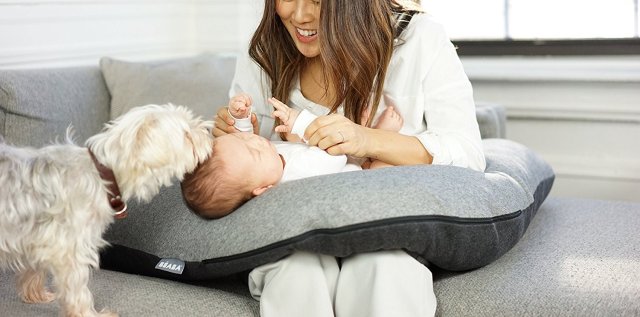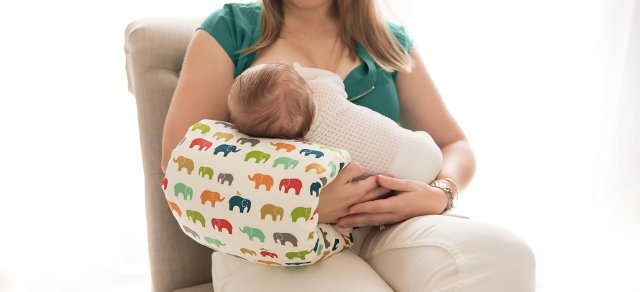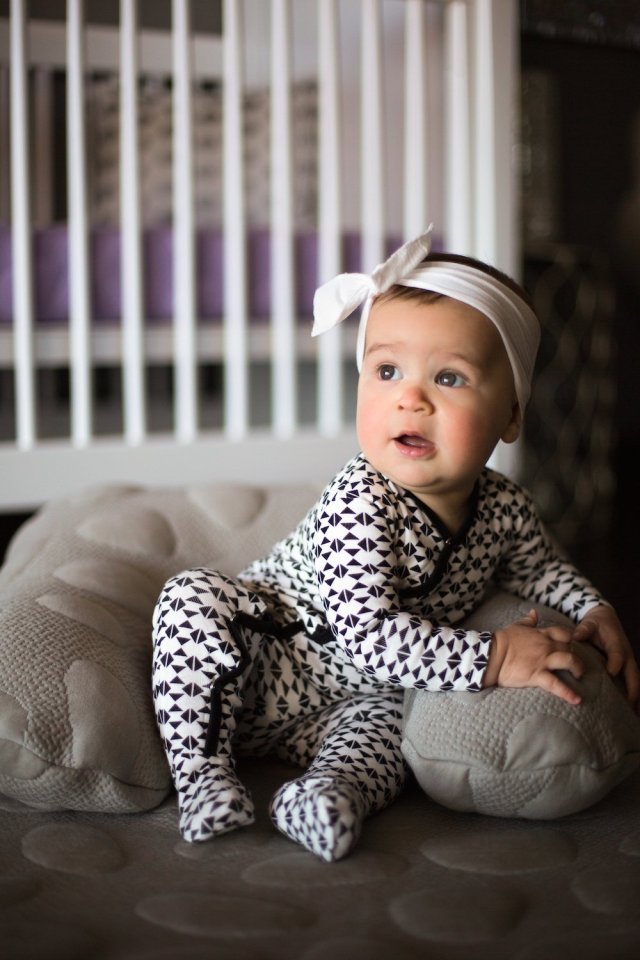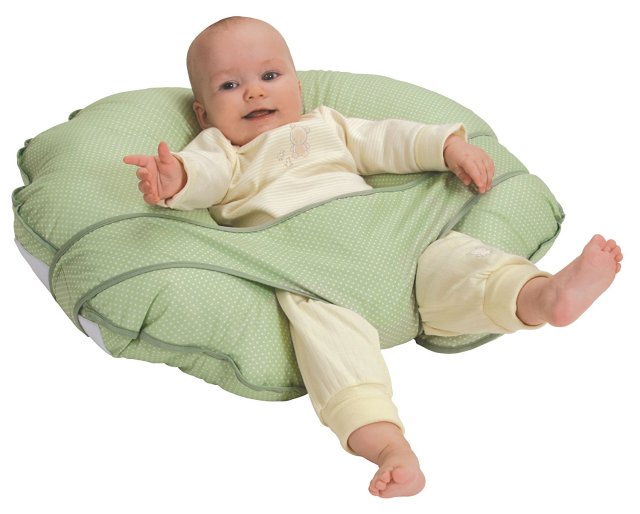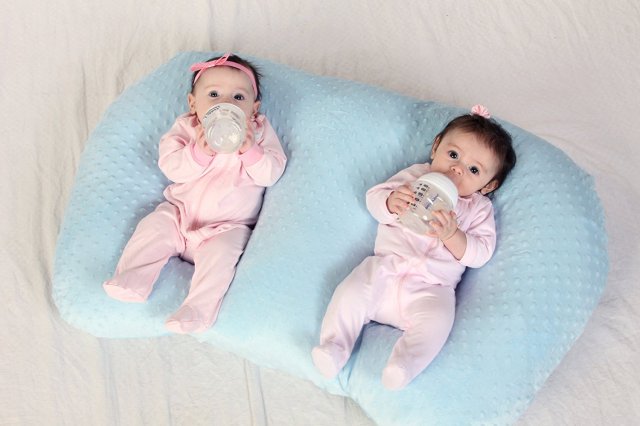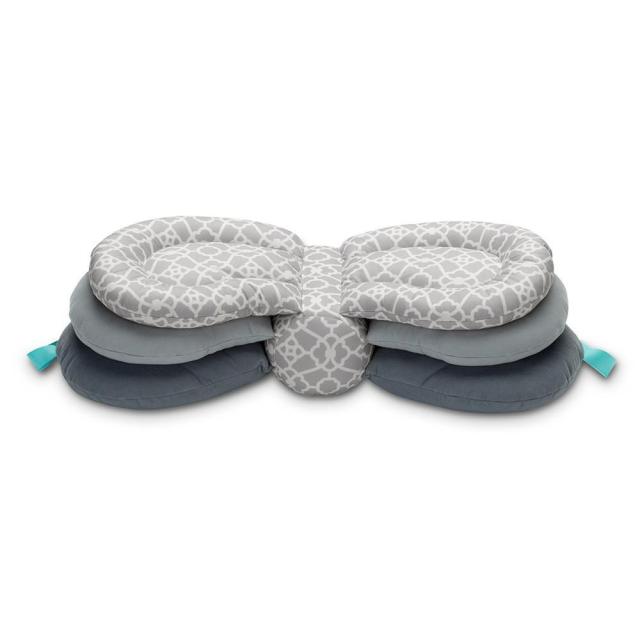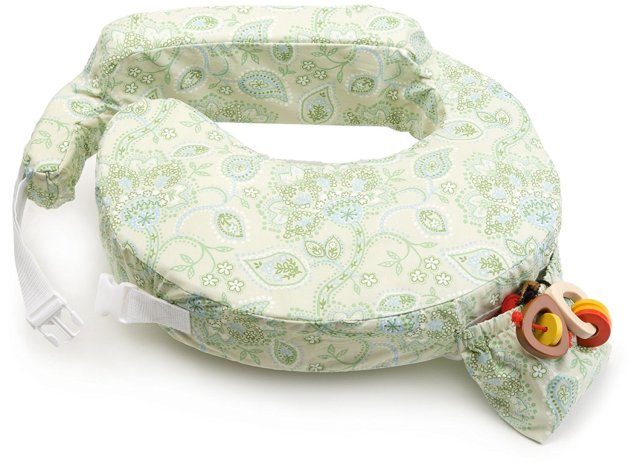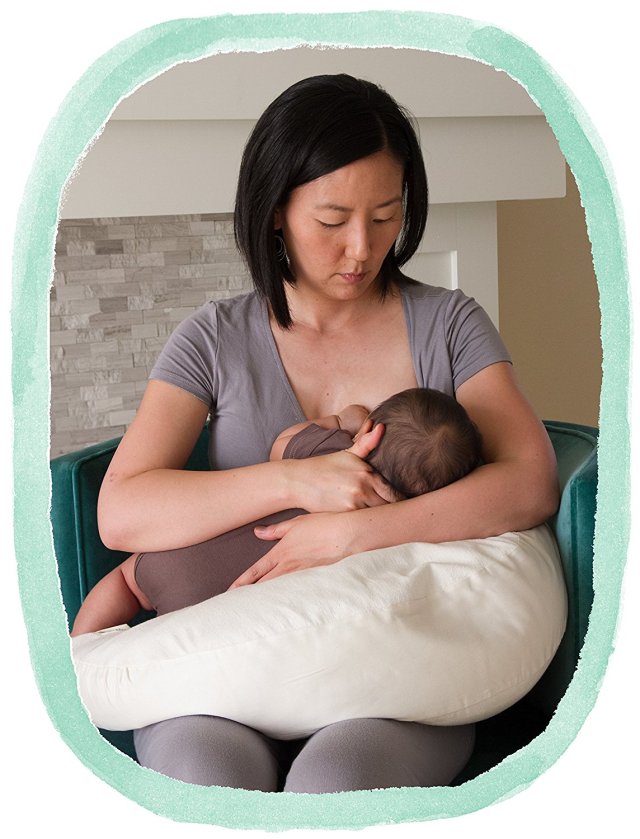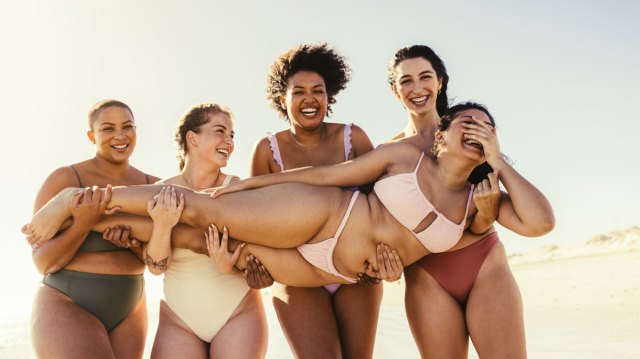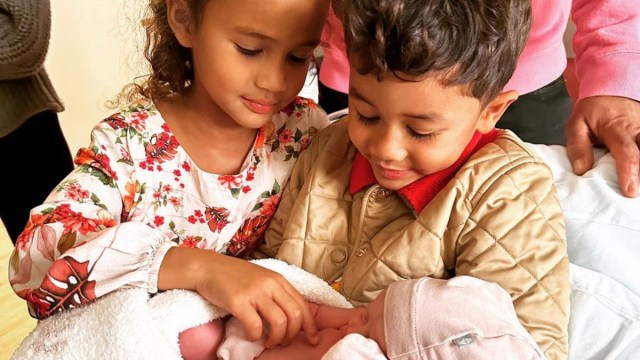From the moment you find out you’re pregnant, many moms-to-be start to notice changes in their bodies. Morning sickness, thicker hair, even varicose veins are among the list of culprits that can show up and disappear. But what if they don’t? It turns out, your baby isn’t the only thing you’ll get from those nine grueling months—there are lots of body changes after pregnancy, too. These not-so-cuddly gifts may stick around long after your baby bump goes away. From wider hips to bigger feet, vision changes to sudden (or disappearing) allergies, many new moms will find these changes are part of their postpartum body.
Your Feet Grow
Your baby’s not the only one who's going to need new shoes. Many new moms add half a shoe size—or more—after pregnancy. Blame the hormone relaxin, which loosens the ligaments in your body to help prepare for birth (that pelvis has to widen, after all), which also causes the bones to spread in the feet.
Doctors say there is a chance your feet will go back to their old size after several months, but if your feet still feel cramped in your favorite shoes, it may be time to go shopping (as if you needed a better excuse).
Note: Call your doctor if your feet have swelled up suddenly, as this may be a sign of potentially dangerous preeclampsia or blood pressure changes.
Your Hips Get Wider
You know those glorious hips that widened to let your baby squeeze out into the world? They may never go back to the way they were (even if you had a C-section). Same goes for your rib cage, which also had to open up to make room for your growing child. For most women, these enlarged bones go back to their original place by about 18 weeks postpartum, but some women keep the extra girth permanently.
"My hips stayed permanently wider which was great for me because I had no shape before," said a Reddit user. "I was built like a teenaged boy, lol."
"My hips? Wider yes and not back to normal," said another mom. "But I have embraced it and now have a more hourglass figure with larger bust, slim waist and wide hips."
"I hope my hips get wider during pregnancy. Wide hips are beauty beautiful," said another.
Related: 10 Things I Didn't Know about Pregnancy, Until I Was Pregnant
Your Breasts Shrink
While pregnancy’s powerful hormones will likely bump your bosom up a few cup sizes, once your milk-making machines dry up, you may end up with smaller breasts than you had before you were pregnant. “You lose a lot of breast elasticity,” Los Angeles–based OB-GYN Pari Ghodsi told Health magazine. “They’re not as full as they once were.”
That said, some women report larger breasts after pregnancy (even after nursing), so it's anyone's guess where your post-baby bust will be.
“I was a C pre-pregnancy, was a DD in my second trimester," said a Reddit user. "I never measured postpartum but they were pornographic while I was pumping, and then once I stopped pumping they vanished into thin air and I’ve got A’s now."
“After nursing 6+ years with four kids, they didn't shrink......just deflated,” said another. “I can go out braless bc I can tuck them into my damn waistband.”
"Once my son was eating adult food they went back down to one cup size larger than they were pre-pregnancy," said another.
Your Hair Changes Color, Curl, or Texture
Pregnancy packs a wallop on your hormones, with these changes wreaking havoc on your body all the way to the tips of your strands. Some steadfastly straight-haired mamas get suddenly wavy locks post-baby, while some women with curls may suddenly go straight. (And this is in addition to losing the lustrous hair you likely grew while your baby was cooking.)
Sometimes, the hair goes back to the way it was months later; some women have changed tresses forever. Whatever your look, embrace it as your new mom style.
"I'm Asian and had thick, pin-straight hair before pregnancy,” said one mom on Reddit. “After I gave birth, it went all frizzy/weird, curly but not actually curly; beachy waves, but not nice beachy waves. Like an insane lion that had a bomb go off next to his head.”
“Got my first grey eyebrow hair 7 months along,” said another mom. “Hair is def not the same.”
“My wife was blonde her entire life, and is now a brunette after giving birth to our son,” said another Reddit user. “It’s crazy!”
Your Periods Change
As if you didn’t endure enough down there, postpartum periods tend to be permanently heavier or more painful after pregnancy. According to the Cleveland Clinic, these changes may relate to a larger uterine cavity causing more endometrium (mucous lining the uterus) to shed.
But it’s not all bad news. Some women actually experience lighter, easier periods after childbirth.
“The bottom line is that periods can change after having a baby,” OB-GYN Diane Young said in this article. “If you are concerned about your periods, make an appointment with your OB-GYN. There are medical therapies to help.”
That Dark Line that Points to Your Nether-Regions May Not Go Away
Pregnancy doesn’t just change your shape; it also changes your skin. Take the linea nigra: It’s the dark line that appears during pregnancy and runs from the middle of your belly to your pubic bone. A common hyperpigmentation that develops mid-pregnancy, it usually fades about three months after childbirth, but it can stick around permanently (as can darkened areolas, which also happens during pregnancy).
If the line bothers you, talk to your doctor. While it can’t be removed completely, there are skin-lightening creams and laser treatments that could make it less noticeable.
Your Allergies Disappear… or You Suddenly Have New Ones
Do you suddenly have a perpetually runny nose? Did your lifelong allergy to celery suddenly cease? Hormones are to blame for that, too. In fact, pregnancy can cause all sorts of changes in your immune system, which can alter your sensitivity to allergens. Experts say the most common newly occurring post-pregnancy allergies include seasonal allergies, food sensitivities, and PUPPP rash, a skin condition characterized by small pink itchy bumps on the abdomen.
"Hormonal fluctuations impact your allergies because estrogen and progesterone have an impact on your mast cells (allergy cells)," allergist and immunologist Purvi Parikh of the Allergy and Asthma Network said in this Parents magazine article.
Pregnancy isn’t the only dramatic hormonal shift that can trigger allergies, he added. “New allergies can emerge during periods of significant hormonal shifts, including puberty, pregnancy, postpartum, perimenopause, and menopause.”
You Have Stretch Marks…in Places You Never Thought You Would
Stretch marks on the belly are a veritable right of passage into mommyhood. But stretch marks on the thighs? Breasts? Buttox? Sorry, but it’s a thing. Stretch marks—which appear as red, pink, or black lines (their color depends on your skin)—are actually small scars that happen when sudden weight gain (i.e. your little miracle) tears the fibers of the skin. Up to 90 percent of pregnant women get them, with most common areas affected being the belly, thighs, hips, butt, and breasts. They can even happen in the upper arms and back.
And while you can’t get rid of (or prevent) stretch marks completely, most fade significantly after several months. In addition, there are some treatments—including chemical peels, lasers, radiofrequency, microdermabrasion, and microneedling— that may make them less noticeable.
My stretch marks are all over my legs!” said one Reddit user on this thread. “Nobody talks about this...my calves, thighs and hips got ‘em for sure. Interesting how everybody’s different.”
“I got zero stretchmarks until after I gave birth,” said another. “And then suddenly they were everywhere! Even behind my knees, under my arms, and on my pubic bone!”
Your Pelvic Floor Muscles Weaken
Sorry, but sneezing may never be the same. The strain of pregnancy and childbirth can weaken your pelvic floor muscles (those are the muscles that support the bladder, uterus, and bowel). This can cause mild to severe urinary incontinence or other pelvic floor disorders including problems related to your bowel or sexual functioning.
The good news? There are exercises you can do to improve things, with daily Kegels being your best first step. If you’re noticing excessive leaking—more than just a little squirt with a sneeze or “Oops” on the trampoline—you may want to talk to your gynecologist about regular physical therapy to improve symptoms (Don’t worry; it’s less embarrassing than it sounds).
Your Vision Changes
Ah, hormones—Is there any part of the body you don’t control? Apparently not. If you’re not seeing your ABCs like you used to, you’re not alone. Up to 20 percent of women experience vision changes after pregnancy, Optometrist Dr. Arian Fartash said on her website. This is because pregnancy hormones cause water retention, which can cause swelling in the eyes.
“Your feet don’t only swell, but your eyes can swell, too, and that makes your vision change,” Fartash said in her video blog, “Ask an Eye Doctor.” “These changes can stay until after you’re done breastfeeding—or it can stay until the rest of your life.” Consequently, Fartash recommends getting your eyes checked after pregnancy to see if you need a new prescription.
You Have Phantom Baby Kicks
Yes, phantom kicks are a thing. Your tummy may not be growing a baby anymore, but it’s not uncommon to feel those familiar baby flutters even long after childbirth. According to Texas OB-GYN Tiffany Woodus, phantom kicks are the perception of fetal movement in the abdomen weeks, months, or years after pregnancy has ended. And it's experienced by more women than you'd think.
Experts aren’t sure why women experience phantom kicks, but according to an online survey done in Australia, women who experience them do so for an average of 6.8 years postpartum, with one mom in the survey reporting phantom kicks up to 28 years later!
My daughter is 7 and I STILL get them!,” said a Mama in this thread.
It freaks me out every time. I'm so glad I saw this post, it's had me guessing a lot,” said another. “My son is nearly three and I've been getting them for the last 6 months. A part of me thinks it's my body teasing me because I do want a second now.”
“Same thing happens to me,” said another. “I even took a pregnancy test to confirm I'm not going crazy even though there was zero chance of pregnancy.”
Your Face Has Dark Spots All Over It
If your face looks splotchier than it did in your child-free days—or if you suddenly have a blanket of freckles all over your nose, you probably have melasma, a common condition caused by pregnancy hormones (it can also happen with the start of birth control pills). The condition, categorized by splotches or freckles of darker skin, usually occurs mainly on the cheeks, forehead, chin, and above the upper lip.
For some women, it goes away a few months after their baby is born (or after they stop taking the pill); for others, the change is permanent. But don’t despair: There are several treatments that may help, including lightening creams and laser light therapy.
A Final Note
While it may seem daunting to learn about all the uncomfortable or potentially permanent side effects of pregnancy, try to keep things in perspective: After all, you just added a human to the world. Those are battle scars you're earning!
And anyway—stretch marks, vision changes, and splotchy skin equals new baby, plus a lifetime of love and purpose. We'll take it.
